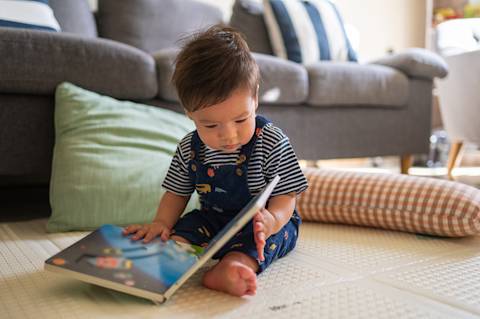Incorporating routines into daily life provides a calm and stable environment for our babies—and for us as caregivers! We can help our babies thrive by creating a rhythm and making their day more predictable. Routines also help babies learn self-control, feel safe, and more easily cope with transitions.

There are two main ingredients for an effective routine: consistency and connection. When you repeat the same routines each day, your baby learns what to expect, which helps them feel more relaxed and comfortable. By providing feelings of safety and security for your baby, you’re building a strong bond with them.
When a routine doesn’t work out, you can still create a sense of stability and structure by telling your baby what’s happening next and why. Even if your baby isn’t talking yet, telling them what is happening helps with the development of social skills and gets you in the habit of communicating with your child.
When children are around 2–4 months, you can start to get into a rhythm throughout the day and find some natural times to incorporate routines. Some caregivers find it easier to stick to a routine when it’s part of a daily activity, like bedtime, mealtime, and more. Here are some ideas to try out:
Bedtime routines
Feed your baby before you put them down for bedtime.
Listen to a comforting lullaby together.
Read a children’s book.
Cuddle and hug your baby.
Give your baby a gentle massage.
Tip: You can also use any of these routines before nap times, as well.
Leaving the house routines
Feed your baby before leaving the house.
Play a quick game or do tummy time to get their wiggles out.
Sing and dance together. You can even make up your own “Leaving the House” song.
Tip: If you have an older child, try to get them involved in the routine too.
Feeding time routines
Create a calming environment by turning on soft music or nature sounds.
Hold your baby close, and enjoy a few minutes of skin-to-skin contact.
Burp your baby after each feeding.
Talk to your baby during the feeding, and narrate what’s going on.
Tip: If you have a partner, family member, or co-caregiver, involve them in the routine so your baby becomes familiar with different people and faces.
As you’re getting started, try out one short routine and see how it goes. You can gradually add more as your baby gets older and more used to a structured schedule.






